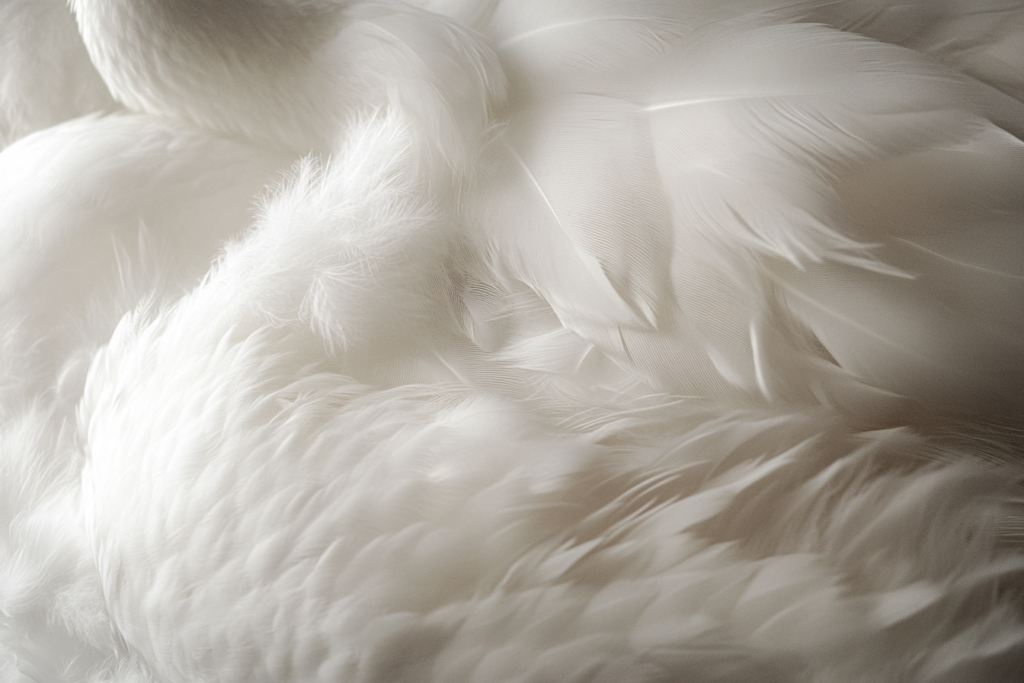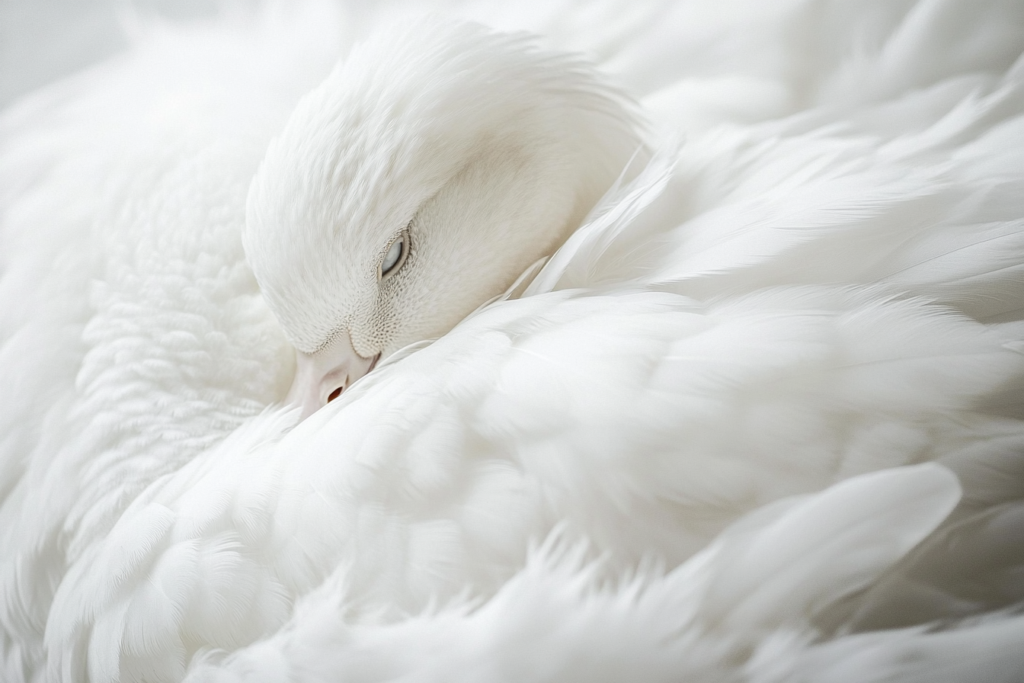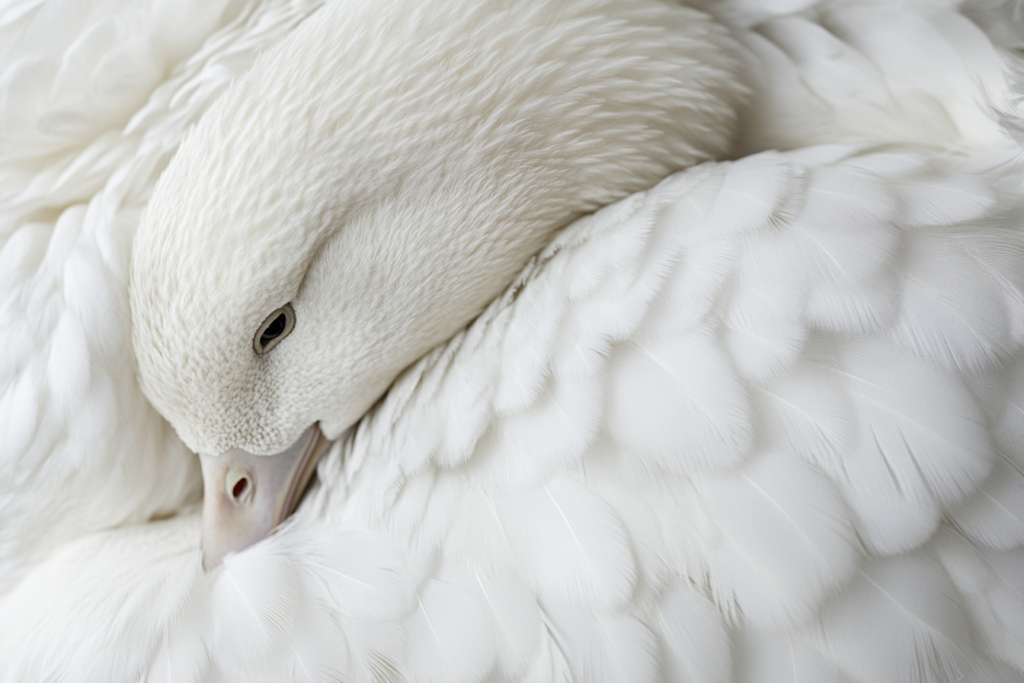Introduction: What is Down?
Down refers to the soft, fluffy feathers that lie beneath the outer feathers of ducks and geese. These feathers are highly valued for their natural insulating properties, making them ideal for use in products like jackets, bedding, and outdoor gear. Unlike regular feathers, down lacks the stiff quill, giving it a soft, airy texture that traps air and retains heat.
The most common types of down come from ducks and geese, with goose down generally considered to be superior due to its larger and more resilient clusters. This cluster structure is what gives down its exceptional thermal efficiency and light weight, making it a favorite material for cold-weather clothing and luxurious bedding.


The Benefits of Down
- Superior Insulation:
- Down is known for its excellent thermal insulation properties. The fluffy clusters of down trap air, which forms an insulating layer that helps to keep the body warm while allowing it to remain light and breathable. This makes down perfect for outerwear like coats, jackets, and sleeping bags.
- Lightweight and Compressible:
- One of the key advantages of down is its lightweight nature. Unlike synthetic insulations, which can be bulky, down provides warmth without adding excessive weight. This compressibility makes down an excellent choice for products like jackets, where the ability to pack the insulation into a small space is crucial.
- Breathability:
- While down is excellent at retaining heat, it is also highly breathable. It allows moisture to escape, which helps regulate body temperature. This makes down ideal for active wear in cold environments, as it helps maintain comfort without overheating.
- Durability and Longevity:
- Down is incredibly durable when cared for properly. With the right maintenance, such as regular fluffing and proper washing, down can last for many years, retaining its loft and insulating properties throughout its lifespan.
Types of Down
- Goose Down:
- Goose down is considered the highest quality down due to the larger, more resilient clusters it forms. This type of down typically offers superior warmth-to-weight ratios and is often used in high-end products like luxury bedding and premium outdoor gear.
- Duck Down:
- Duck down is more commonly found in affordable options, though it still offers excellent insulation. The clusters are smaller compared to goose down, but they provide comparable warmth at a more affordable price point. Duck down is a great choice for budget-friendly outerwear and bedding.
- Mixed Down:
- Some products use a mix of both duck and goose down. These blends balance cost and quality, offering good insulation without the premium price tag of pure goose down.
Common Uses of Down
- Outerwear:
- Down is most commonly used in outerwear, such as jackets and coats, for its lightweight and insulating qualities. High-end winter jackets often use down to keep wearers warm in frigid conditions without the bulk of traditional insulation.
- Bedding:
- Down is also used in bedding products like comforters, duvet inserts, and pillows. The natural softness and ability to trap heat make down an excellent choice for creating cozy and warm sleep environments. It is particularly prized in luxury bedding.
- Sleeping Bags:
- Outdoor enthusiasts often choose down for sleeping bags because of its superior warmth-to-weight ratio and compressibility. A down sleeping bag can be packed into a small space, making it ideal for backpacking and camping.
- Accessories:
- Down is also used in accessories like vests, gloves, and scarves, particularly for cold-weather wear. These pieces often feature down lining or padding for added warmth and comfort.
Caring for Down Products
- Washing:
- Down products should be washed with care to maintain their loft and insulating properties. It’s important to use a gentle detergent designed for down and to wash in cold water on a delicate cycle. Avoid using fabric softeners, which can break down the natural oils in the down.
- Drying:
- After washing, down items should be thoroughly dried in a low-heat dryer. It’s essential to dry down completely to prevent clumping. Tossing a few clean tennis balls or dryer balls into the dryer will help keep the down evenly distributed.
- Storage:
- Down should be stored in a cool, dry place. It’s important not to store down items in tight spaces that compress the insulation for extended periods. Ideally, down should be stored loosely in a breathable storage bag or container to maintain its loft and durability.
Conclusion: The Timeless Appeal of Down
Down continues to be one of the best materials for insulation due to its unmatched warmth, lightweight properties, and durability. Whether used in high-end outerwear, luxury bedding, or performance gear, down offers exceptional comfort and warmth. With proper care, down can last for years, maintaining its insulating power and softness.



